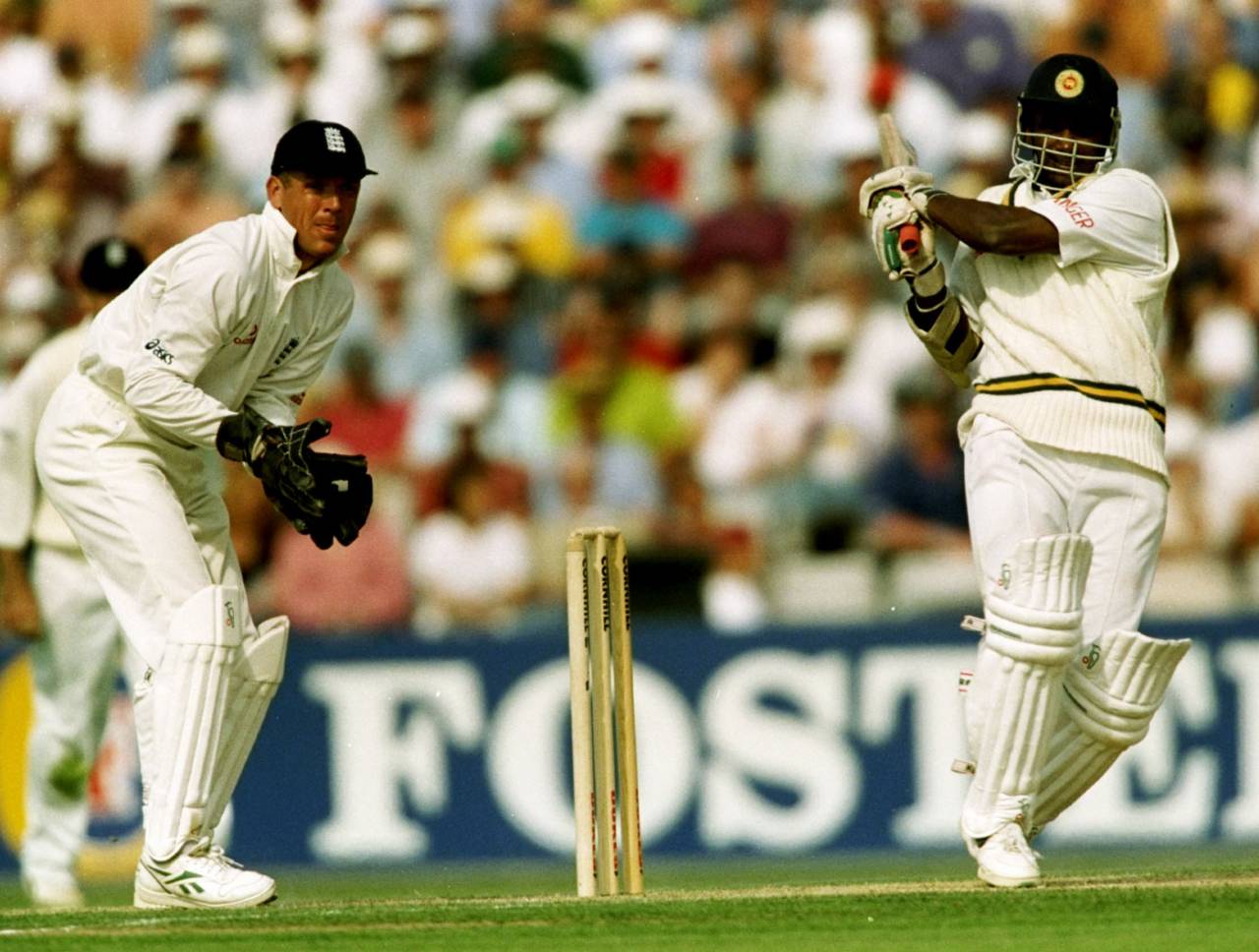Certain strokes give us a window into a player's character. Take Mahela Jayawardene's late cut. Jayawardene watched the ball turn towards him, waiting until it seemed it must inevitably cannon into the stumps, before, at the last possible moment, caressing it towards the boundary. It was undeniably a thing of beauty, an act of bravura, but above all, it was a touch shot. Jayawardene was the most intuitive of cricketers, whether at the crease or as captain, and this single stroke revealed his instinctive approach for all to see.
On rare occasions, a rendition of a stroke is so forceful, so compelling, that it remains in the mind, a lasting testament to the player who conceived it.
At Old Trafford, during his epoch-marking 189 not out in May 1984, Viv Richards picked up a good-length ball by Derek Pringle from outside off stump and flicked it nonchalantly over long-on for six. That tableau - Richards' casual flick of the bat, the long-on fielder scrambling helplessly after a ball that sailed serenely over him, Pringle's head slumping between his shoulders - perfectly encapsulated Richards' mastery of England that day.
Sanath Jayasuriya played such a match-defining shot during Sri Lanka's 1998 Test victory
at The Oval. Despite Jayasuriya's first-innings double-hundred and Muttiah Muralitharan's 16-wicket haul, the detail that lives most vividly in my memory is a stroke played in the second innings. With a paltry target of 36 runs, Sri Lanka's second innings was a formality. That single shot, a six over point played with both feet off the ground, not only revealed Jayasuriya's mindset - uninhibited and dismissive - it displayed his unorthodoxy, his daring, and his calculated savagery.
Player, bat, and ball moved at different speeds and in different directions, but Jayasuriya managed to time the impact of bat on ball to perfection, an extraordinary triumph of hand-eye coordination
Jayasuriya was no mere slogger: 6973 runs in Test cricket, including a triple-century against India, attest to a fine technique and temperament. But he was unorthodox, relying on hand-eye coordination, a strong bottom hand and fearsome power, rather than the textbook. Coaching manuals imbue in batsmen the necessity of a steady base from which to play, of keeping the head still at the point of impact of bat on ball. Only when leaping like a gaffed salmon to avoid a throat ball is head movement deemed desirable.
At The Oval, Jayasuriya was himself in motion a couple of feet off the ground when he brought his bat down at speed to the exact point where it met the ball. Player, bat, and ball moved at different speeds and in different directions, but Jayasuriya managed to time the impact to perfection, an extraordinary triumph of hand-eye coordination. Having conquered the timing, his idiosyncratic technique took over. His dominant left hand flayed the ball to the point boundary, a shot only a strong man could manage. The much-lamented Tony Greig once observed, "Jayasuriya must get tired, carrying all those muscles around."
The final element in that shot was the audacity of his ambition. By 1998, Jayasuriya was an established world-beater, a tag he had first grabbed with his savage assaults during the 1996 World Cup. Arjuna Ranatunga needed someone to execute Sri Lanka's blitzkrieg policy of exploiting the fielding restrictions at the start of the innings, and the planets aligned to give him Jayasuriya. In the
quarter-final, against England, Jayasuriya scored 82 from 44 balls. By the time he was out, in the 13th over, he had reduced his team's target to just over 120 runs, which Sri Lanka knocked off with almost ten overs to spare. Jayasuriya carried that attitude with him for the rest of his career.
I had to wait ten years to see Jayasuriya's brand of unconventional destructiveness in the flesh. In the second match of Sri Lanka's 5-0 whitewash of England in 2006, Jayasuriya, then just shy of his 37th birthday, hit his
20th ODI hundred. My memory of that innings, sitting in The Oval in the south London sunshine, was that the ball seemed to be constantly in the air, whether flying over cover, midwicket or off an edge over the wicketkeeper's head. That is, of course, why we are drawn to batsmen like Jayasuriya. Every time the balls soars towards the stratosphere, there is a chance the batsman has made an error of judgement or execution. There is inherent risk in each stroke, an inevitable consequence of the "live by the sword, die by the sword" mentality that underpins this high-octane batting. Indeed, Jayasuriya's innings that day was terminated by a tumbling Tim Bresnan catch, but by then he had made his mark, including a six over backward point, hit after charging down the wicket to the England seamer Sajid Mahmood, which was almost a reprise of his shot in 1998.
There are many reasons why the cut shot from 1998 sticks in the mind. It was unorthodox and had the predetermined ferocity that was such a feature of Jayasuriya's play as he pummelled attacks around the world. But the real reason this shot, out of all the shots played during that Test, stands out is because it captured a moment. Feet off the ground, bat scything through the air, the shot stamped Jayasuriya's, and by extension Sri Lanka's, domination over England. On such moments are memories made.

